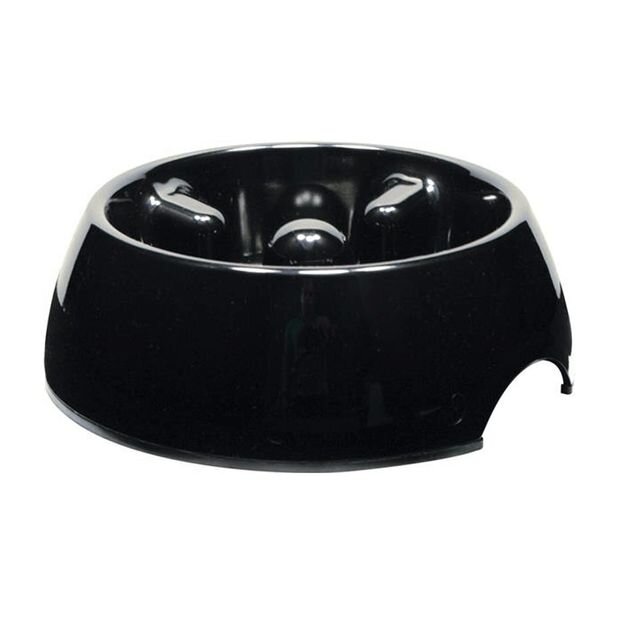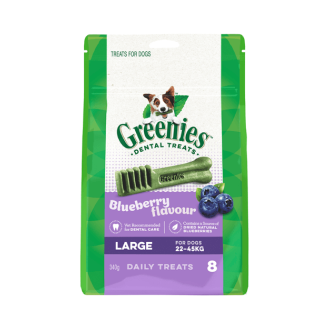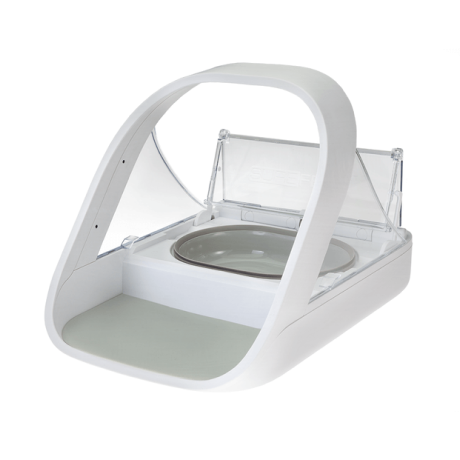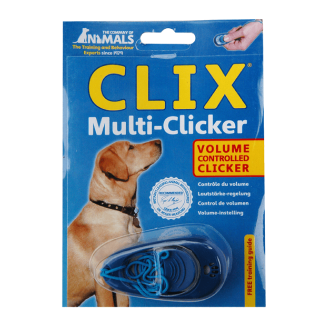Last Updated: 05/05/2025
Top Pet Hacks from Our Vets: Expert Tips for Easier Pet Care
Caring for your pet can be a rewarding yet sometimes challenging task, but with the right tips and tricks, it can be made much easier. In this article, our experienced veterinarians share their top pet hacks to help you streamline your daily pet care routine.
Author: Dr Carla Paszkowski BVSc (Hons)
Reading Time: 1 minute - quick read
Personally recommended (and used!) by our Vet Squad
As a devoted pet parent, no doubt you know that your fur baby is worth every hairball, vomit patch, anxiety attack, and chewed shoe that they come with. It's simply part of the package, right?
But as willing as you may be to put up with all of your pet's quirks and flaws, we're here to tell you that it doesn't always have to be so hard!
Working with animals as much as we do, my fellow Vet Squad vets and I have acquired a number of lesser-known 'tricks of the trade' which can really help life alongside our beloved pets a little bit easier.
We've broken it down so you can see our individual recommendations, based on our own personal experiences. Remember; if you have any questions for us, our Vet Squad is always here to help!
See each of our vet's top recommended hacks:
Dr. Teagan

Teagan's Top 'Hack': Prevent ear infections (and avoid extra vet bills!) by cleaning your dog's ears regularly with a proper vet-recommended cleanser. In prone dogs, I recommend cleaning once per week and also after bathing or swimming.
Ear infections, particularly as a secondary issue to skin allergies and yeast overgrowth in the ear canal, are incredibly common in dogs and cats. Treatment can be very costly and frustrating - but a lot of people are unaware that it may be prevented by simply cleaning the ears regularly (particularly after baths or swimming) with a vet-recommended cleanser.
One of my go-to pet products that I recommend far and wide is Epi Otic Ear and Skin Cleanser. My two staffies have sensitive skin are prone to developing yeasty ear infections. I clean their ears with Epi Otic once weekly and after bathing or swimming to help keep them healthy. It helps to remove any built up wax and gunk and gently dries out any moisture which may have become trapped in the ear canal.

TOP TIP - if you suspect your dog has an ear infection, always have a check up with your vet before introducing anything to the ear canal. If the ear drum is ruptured some medications and cleansers may cause damage.
Dr Carla Paszkowski

Qualifications: BVSc (Hons)
Pet parent experience: Cats, Dogs, Birds, and Guinea Pigs
Special interests: Nutrition, Stress and Anxiety, Feline Medicine, and Pocket Pets
Carla's Top 'Hack': Use pheromone mist diffusers to create a happy home!
I'm a cat lady through and through. When you've cared for as many feline friends as I have, you acquire a few tricks of the trade! Not a lot of people realise just how responsive felines are to pheromone cues. My top tip is to invest in a pheromone diffuser early on and keep it running, particularly during periods of time that your cat might find stressful (like when you are renovating, entertaining visitors, or introducing a new pet).
Calming pheromone products like Feliway (or Adaptil, for dogs!) are pretty cool. When plugged into a wall socket, they release a mist into the environment containing an analogue of the natural 'calming' pheromone. This compound is undetectable to humans but pets respond instinctively to it.
Pheromone diffusers can help with almost any stress-related chronic condition - from reducing urinary issues and hyperactivity, to improved digestion! And it's a must-have if you are introducing two pets to one another. Trust me, a diffuser will make your life alongside a cat much easier!
TOP TIP - Pheromone products are generally available 2 forms - a plug-in diffuser, and a spray bottle. The diffuser is best used for your home environment, and the spray for any crates or carriers.
Dr. Carla explains how to use Feliway. For more videos, check out Pet Circle's Youtube Channel.
Dr. Antonella
Qualifications: DVM
Pet parent experience: Dogs, Cats and Birds
Special interests: General Pet Care, Research, Diagnostics and Public Health
Antonella's Top 'Hack': For pets who guzzle or 'inhale' their food, try a puzzle feeder or slow-down bowl. It will to slow down their eating, stimulate their mind, and improve digestion.
There's nothing quite like the challenge of getting very food-motivated pets to slow down when they eat! Choking from eating is actually not very likely in dogs, as their epiglottis does an amazing job of protecting their airway, but eating quickly and gulping air while eating can lead to the development of bloat (or GDV - gastric dilatation and volvulus). GDV is a dangerous condition wherein the stomach twists in on itself and traps in food and gas.
While it might seem that feeding larger kibble would slow them down, some dogs do gulp down their meals regardless of what you feed them. So changing up your feeding method may yield better results.
TOP TIP - Create a 'treasure hunt' for your pet by scattering their morning portion of kibble around the yard or hidden throughout the house. For cats, be sure to use plenty of levels inside (such as window sills) to encourage activity. You can also make your own interactive feeder by cutting some holes in a recycled plastic bottle - simply fill with kibble and watch your pet bat it around to retrieve the tasty morsels.
Ways to reduce your dog's risk of bloat include: feeding more frequent meals, scattering their food across a flat surface to encourage foraging, or investing in a slow bowl or puzzle feeder to prolong mealtime.

Dr. Elise
Dr Elise Barry

Qualifications: BVSc (Hons), BSc (Hons)
Pet parent experience: Dogs, Cats, Guinea Pigs, Rabbits, Cattle and Chickens
Special interests: Animal Behaviour and Nutrition
Elise's Top 'Hack': A daily joint supplement from a young age (particularly in large breed dogs) can help delay the development of arthritis, saving you big time in treatments in the long run.
Arthritis is a degenerative condition which affects every dog as they age, but can be particularly significant in large breeds, dogs with injuries, and overweight dogs. I'm a big fan of joint supplements, particularly Rose Hip Vital, 4cyte, or Glyde, for large breed dogs. You can start giving joint supplements at a young age (typically around the 12-18 month mark) to help slow the progression of arthritis, and they will benefit big time in the long run. It's also great for dogs with a previous injury, such as cruciate ligament rupture, or any history of orthopaedic surgery.
I personally use Rose Hip Vital for my dog. After all the trials and tribulations of bringing home a rambunctious rescue dog, we then discovered he had skin sensitivities. Rose Hip Vital is a supplement powder for dogs needing joint support, immunity boost, improved performance, skin and coat care. Rosehip is clinically tested to reduce joint inflammation and has been proven to be more effective than other agents for reducing pain, joint tenderness, swelling and improving joint function when used for at least 3 months. My now senior large breed dog is still very agile and active plus he has a lustrous coat in pristine condition!
READ MORE Check out our guides to Managing Arthritis in Dogs or Managing Arthritis in Cats, which discuss everything from supplements to diets!
Dr. Kes
Dr Kes Holliday

Dental Care is one of those facets of pet health that is hard to stay on top of, and easy to neglect. Watching your pet slink away as you wield a tooth brush at them is not a fun experience!
The best tip I can give is to try and find a method that works for your pet, because you'll be so much more likely to keep up with it. One of the most popular ways to maintain your pet's teeth is by giving them long-lasting dental chews. But dental chews aren't all created equal - they can vary in quality and effectiveness.
I have seen a huge improvement in my whippet's teeth since giving him Greenies Dental Treats. Being a sighthound he is quite prone to dental disease - and the dreaded smelly breath! It's reassuring to know I can give him a Greenie when I don't have time for doggy tooth brushing. Plus, he loves the different flavours and looks forward to his treat every day!

TOP TIP - Not all dental chews are created equally. A tooth-cleaning chew only works if it's long lasting, so that your pet can spend a long time grinding their teeth on it. If your pet chomps once and the treat is gone, there's virtually no dental benefit!
Dr. Emilee
Dr Emilee Lay

Qualifications: BVSc, BSc (Veterinary) Hons 1
Pet parent experience: Dogs, Cats, Rabbits, Guinea Pigs, Pigeons, Parrots, Chickens, Fish and a Snake!
Special interests: Exotic and Avian Medicine, Wildlife and Pocket Pets
Emilee's Top 'Hack': For birds, provide a range of brain-stimulating puzzle and problem-solving toys, and rotate through them to prevent boredom!
I love using durable foraging toys for birds! Being an owner of many feathered friends at home, I understand how important it is to keep their brains churning with environmental enrichment and food games! The term 'bird brain' couldn't be more wrong!
By using foraging toys to hide treats in like almonds and seeds for my larger parrots, and fruits and veggies for my smaller ones, I know that they are using all their mental and physical devices on hand. It's a double bonus if the toy is extra durable - although toys they can destroy are also great for enrichment and play.
Pet Circle has a great range of foraging, interactive toys for birds. I like to rotate them through, to keep things interesting and extend the life of these toys. I personally love the Creative Foraging Tug n Slide as it requires extra dexterity and brain power. Cardboard toys are also great for birds to destroy and play with, and often contain exciting streamers for a bit of extra fun.
READ MORE Check out our guide to The Best Bird Toys, which discusses everything from mirrors to gyms!
Dr. Belinda
Dr. Belinda

Qualifications: BVSc (Hons)
Pet parent experience: Dogs, Cats, Chickens and Birds
Special interests: Animal Behaviour; Kitten Rescue, Rehabilitation and Medicine; Preventative Health
Belinda's Top 'Hack': In homes with multiple pets, a microchip-activated bowl is a must-have to keep them out of each other's food!
A lot of pet owners with multiple pets find it difficult to separate them at mealtimes. In pets of different lifestages or species, it is important to know they are all eating the right food. I also treat a lot of pets who require a prescription diet for a medical condition - and if this food gets eaten by the wrong pet, it can be expensive and wasteful (or even dangerous depending on the diet!)
A microchip feeder is the perfect solution. It ensures that pets are unable to steal food from other furry family members. It turns your pet's existing microchip into an electronic key that opens the little flap and allows access to the food within. Because the bowl is kept covered when not being used, it helps to keep food fresher for longer and also keeps flies away.
The microchip activated bowl can be programmed for up to 32 pets (if you've got a whole menagerie!) Common situations that I've found this bowl is perfect for include: overweight pets stealing another pet's food, a glutinous dog eating the cat's food, a puppy eating an older dog's diet, and it's also great for keeping cheeky little fingers out of your pet's bowl!


DID YOU KNOW - Microchip-activated technology is also available for doggy doors and cat flaps. These high-tech products allow you to program access for one pet while keeping another safely indoors, and it can help keep out wandering strays.
Dr. Quincy

Qualifications: BSc DVM
Pet parent experience: Dogs, Birds, Fish, Terrapins and Rabbits
Special interests: Preventative Health and Training Birds
Quincy's Top 'Hack': Having had a variety of different feathered pets growing up, I've found trick training to be a great way to keep their clever little brains stimulated.
For little birds like budgies, it can sometimes be difficult to find a suitable "high value" treat that is easy to carry around with you. For bigger birds like Conures, African greys, Cockatoos and Macaws, there is no issue carrying nuts in a small little pouch (e.g. fanny pack). But for budgies, I've found using spray millets (e.g. Trill Millet Sprays) to work great! It's big enough to easily carry in a pouch and hold between your lips for teach the "kissing" trick.
Another tip that helps with training is to invest in a clicker (e.g. Clix Multi-Clicker Training Aid). It helps reinforce a behaviour with a sharp click. It is a lot quicker to create a clicking noise to signal a treat is on its way for a desired behaviour compared to saying "good bird". It works especially well for speech training.
Often, my African Grey would pick up words from her surroundings. I would then click and provide a reward every time I hear her say the word. Sometimes, I can be across the hall out of sight when the word is spoken. A click can be easily made and heard a fair distance away. She would then constantly repeat the word for a treat whenever she sees me walking away. Gradually I would create a link between the word with a hand sign (I used sign language) so that she could say the word on command and eventually on her own make the connection between hand signal and associated phrases.

TOP TIP Some clickers also come with a whistle (e.g. Clix Whizzclick Dog Training Aid). They are great for recall-free flight training as you don't have to carry two separate items (a clicker & whistle).
Further Reading
Did you know our Vet Squad writes helpful pet care blog articles? Browse the entire library, or check out some of their top articles below:
Premium Pet Food: Is it Worth It?
What is the Best Flea and Tick Treatment for Dogs?
Want to know more? Check out our Discover Page for more tips on keeping your pets happy and healthy.
